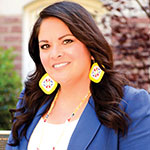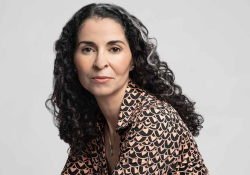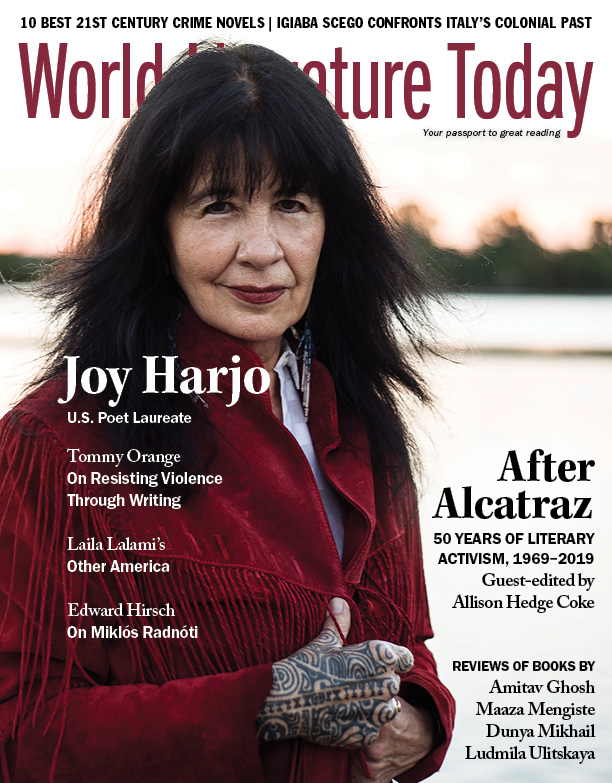Resisting the Violence through Writing: A Conversation with Tommy Orange
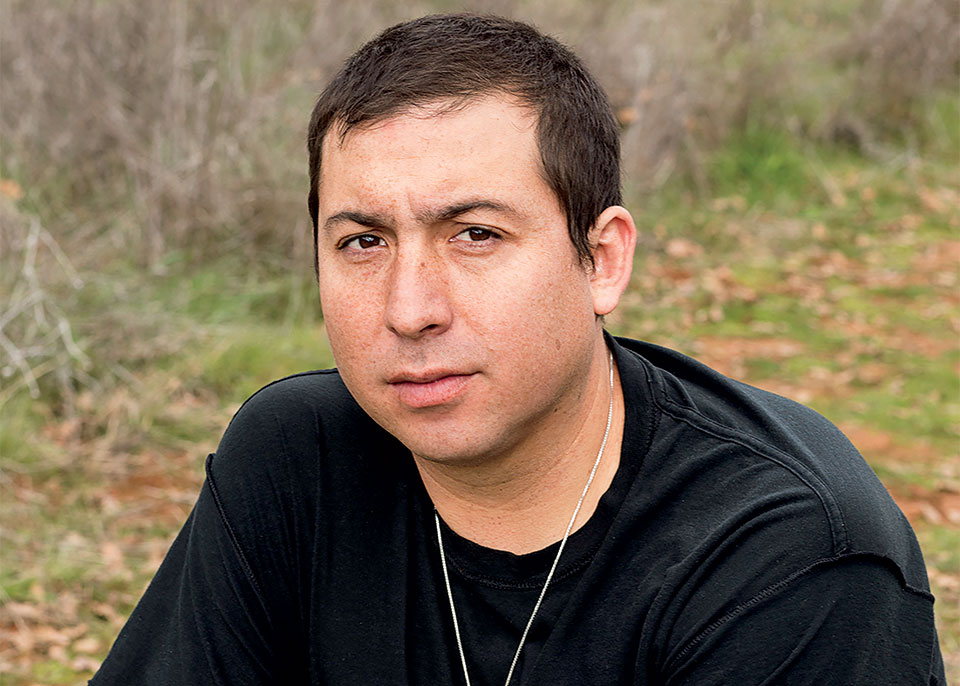
The following excerpt comes from an interview conducted with Cheyenne author Tommy Orange during the 2019 National Conference on Race and Ethnicity in Higher Education (ncore) in Portland, Oregon. We sat down in front of a crowd of five thousand conference attendees to discuss his wildly successful first book, the PEN/Hemingway award-winning There, There, pushing back against Native tropes, and the new generation of Native authors.
Heather Shotton: Could you maybe just introduce yourself? What do we need to know about who you are?
Tommy Orange: Well, I published a book last year. It’s been out for just less than a year, and my life has changed quite a bit. I was born and raised in Oakland but connected specifically to Hammond, Oklahoma. That’s where my dad grew up. Cheyenne and Arapaho Tribes. I didn’t publish anything before the book, so the reception has been pretty crazy. I worked in the Native community in Oakland, the Native American Health Center, for almost a decade doing work in the behavioral health department. Actually, the first readers of this book were the scariest group to read in front of; it was Native youth from Oakland.
I was part of a Youth Suicide Prevention Grant, and I was asked to be part of an author reading series, and it was sort of a joke that I was an author at that time, but my wife was the project director, so . . . I’d been writing the book for a year, and I read part of what I’d written that still remains in the book to them—there was a really amazing reaction, an emotional reaction, from kids that generally did not do that for anything.
Shotton: I think that a lot of people have had a very strong reaction to the way that you take on how we think about land and place and that pushback against the way that we think about the connection of Indigenous people to place. Can you talk about how this reimagining of land and place and that connection inspired your work?
Orange: Yeah, I think growing up in Oakland, and really wherever you grow up, and that becomes your home, becomes something that you relate to in a way that’s similar to family. It becomes so familiar. It’s the inside of your memory. I mean, because I grew up in Oakland, anywhere I go in Oakland might trigger an emotion or a memory, and this is part of what home means. There’s so many Native people living in cities and very little written about that experience. So, it came from wanting to make sense of an experience that I knew was real and that, working in the community, had seen and heard people talk about. And this idea of relating to environment no matter where it is as belonging to it. I certainly didn’t mean to talk about reservations and urban life as necessary dichotomies, because they’ve grown up together. Urban Indian life has thrived the way it has because it’s kept connections to the reservation.
But some of the writing is in resistance to the idea that the only way to be Native is to be from a reservation. It was trying to understand myself and, through the process of writing, what it means. What are the different complexities that it comes with? And this is why I have all these characters, to explore the different ages and generations and different proximities to whatever their connection to Native identity is. I wanted to really expand the range of what we think about the Native experience in contemporary times.
Shotton: Yes, I think it’s really critical. I think that for many people, many of your readers, this is their first introduction not just to Native people but particularly to urban Natives, and I think that’s been important. Did you feel any pressure to write or share these stories with the public?
Orange: I didn’t because I didn’t think the public would care. Usually in the Native world, if you write a book, it gets published by a small university press. I did it so I could get a teaching job at my school [the Institute of American Indian Arts]. I thought my fellow peers, my other teachers might read it, and then I’d make my students read it. But outside of that, there was no pressure or burden of responsibility because I didn’t imagine that it would be read.
Shotton: We were talking backstage and you said nearly two hundred thousand copies have been sold and it’s been reprinted, what, eighteen, nineteen times now? And you have had this amazing response from Natives and non-Natives alike. What do you think that draw is?
Orange: I’ve had a lot of different theories. I don’t think I know the non-Native response. I don’t quite understand it. We were talking a little backstage about the fear of non-Native people liking the tragic aspect of it.
No, I don’t know about the universal thing that’s happening; I know that the Native reaction has been really warm and embracing. Especially in the Oakland Native community. When Native people come up to me after readings, there’s this exuberance and joy from having read it and for me representing in a way. That’s the most important reaction to me. I know that there’s a certain reaction from non-Native people that’s just like, “It’s so sad.” And, “Why do you write such miserable lives?” I’ve heard this before and I’m like, “Hold on a second, this is my life. And I don’t think it’s sad or miserable.” That’s like, keep your stuff to yourself, that’s wrong to say to somebody. That’s not what Native people read into it.
Shotton: I would agree. Your depictions of the characters in your book really do challenge tropes of Native people. I have a question for you from Meagan Redshirt Shaw and John Little, who I believe are in the audience somewhere. They wanna know, “What is it like writing against the perceptions American society has of Native people?”
Orange: Well, I think there’s some part of writing the urban Native story that, because there’s not very much out there, felt really lonely and scary because there wasn’t that much to model after. One side of it is about resisting this really old and, I guess, sad image, this feathered icon that we still use on jerseys for sports teams. There’s a certain amount of rage that spurs me to write against some of these things that it seems like such a passive form of systematic violence, but it’s so active. It’s just hard to get the metrics on the people and the reasons why people allow this stuff to continue. So, it felt like I was writing from a place of rage against something. People are like, What’s the big deal? It’s like a lot of people doing very small things, but it equals an intense oppression against the people.
I guess writing against that felt like that’s the most I know how to do. I don’t know how to do very much in this world, but I figured out that I can write, and that’s something I can do to resist that sort of systemic violence, these visual tools that are used to represent us, and the language that’s used to talk about us. And it needed a major update. Feeling like I could write that in a book, I felt empowered to do so.
Non-Native people should stop asking if they can write Native characters.
Shotton: And you did that. So I think that Native people have clearly connected with the characters in the book and the characters you’ve created in really various ways. I know that your characters aren’t necessarily based on any one individual, I’m assuming, or you wouldn’t tell us if they were, probably.
Orange: No, I purposefully did not use people from the community because I worked in storytelling for a long time and came to realize that you can’t use people. I mean, I won’t tell another author what they can or can’t do. I won’t use another person’s story because you earn your life details, and there’s a lot of pain involved in earning that, and especially people who are oppressed, and this is one of the reasons why non-Native people should stop asking if they can write Native characters. You’re taking somebody else’s experience that they earned to use for your story, because you think that’s gonna give you some kind of cred in the writing world that now seems to be more diverse. I don’t know why people want to do it, but I’ve been asked several times for permission for a white writer to write Native characters. But I very much didn’t want to use other people’s stories, so the characters are much more based on me. There’s certain composite experiences that I have from working in the community and growing up that I can’t control. But I didn’t specifically think of a person and make a character out of them. It was much more about coming from wherever fictional characters come from, and I pulled generously from my own weirdness.
I pulled generously from my own weirdness.
Shotton: I think that speaks volumes to those shared experiences. Many Native people are able to connect with those characters in different ways. I think that having someone that you can identify with in this wildly successful piece of work—this international best-seller—has been really important for Native youth and Native people across the country.
So we want to build off this question about how you’ve captured both Native and non-Native audiences alike, which isn’t an easy thing to do. And I think that, as we’ve talked about, both of these audiences take away very different teachings and lessons from the stories you share. I want to know, for you, what do you want readers to take away from these stories, and do you have different aims for different audiences?
Orange: Well, when I was writing it, if I was ever thinking this could become a book, then I was thinking that Native readers would read it, but I generally think of the reader and the reading experience and try to write in such a way that respects the reader’s time and their experience with the page. I’m not trying to entertain necessarily, but I want it to be readable and I want people to want to keep reading it. So I think in those terms. As far as takeaways, I don’t wanna spoil the ending, but things don’t exactly end well. But I tried to write as much hope as I could into it, and I feel like it’s where hope and realism meet. For me, and the life that I’ve lived, there’s certainly not a bow on the end, but while I was finishing the book, we were watching elders getting hit with rubber bullets on national TV while trying to pray for clean water. And then we are getting attacked by dogs. That just felt true to me at the time. Granted, when the very concept for the novel first came to me, I knew it was not gonna end well. But finishing it, that just made it clear to me that this is the novel that I’m writing, and it has this particular tone and ending to it. I tried to infuse hope, so I don’t want to depress anyone. I tried to infuse as much hope as I could given that there are certain life stories that are tough to go through.
While I was finishing the book, we were watching elders getting hit with rubber bullets on national TV while trying to pray for clean water.
Shotton: Speaking of that, an earlier part of our conversation was about what’s been described largely as this new generation of Native writers. You and your classmate, Terese Mailhot, both released books within months of each other and have had really great success. To what do you attribute the emergence of this new generation, or is that what it is, a new generation?
Orange: I don’t know, but here’s one of my other theories. So the first Native Renaissance came after we took over Alcatraz, and this was on national TV. Nixon, you know, had to say stuff about it and cut the electricity and the water. And then there was all this attention to Native people. So it’s like the American consciousness, when they see us on TV or in a big way, they’re sort of like, “What are they up to?” For a couple of years, maybe like five years . . . And then it sort of dies out, and this is what happened after the 1970s and civil rights, and then in the 1990s, Dances with Wolves came out and it won all these Academy Awards, and so Native people came back into the American consciousness. Again, there was this boom in books being published afterward because it was like, “What’s going on?” And then it died out. Now we have Standing Rock and this new generation happening, and I’d like to believe that this time around it’s not just a “What’s going on?” again, followed by “Who cares?” But part of this diversity in publishing that’s happening across a lot of marginalized groups and voices that we haven’t been listening to, I’m hoping that it’s part of something more sustainable and not just this wave based on tragic circumstances.
Shotton: You graduated with your MFA from the Institute of American Indian Arts. How critical was that experience for you as an emerging writer, as a student, and for your process?
Orange: I think to be in a Native writing community was very important, to know that and just to be a part of that kind of community. To be a writer can be very lonely, and to be a Native person can be lonely. In a lot of the schools we went to in Oakland, I was one of maybe a handful of Native students. So to be with mostly Native students who are also writers was really amazing as an experience. It was vital to everything that happened.
Shotton: You talked about youth earlier and reading the first piece from this book to a group of youth. And your presentation of Opal’s story, her time at Alcatraz, and the inclusion of this experience from a young person’s perspective, I think, were really powerful. Why was it important for you to tell that story from the perspective of Native youth?
Orange: For the same suicide prevention grant, we brought youth over to Alcatraz and had the elders tell their stories. It was from that experience, watching the youth watch the elders, that made me wonder about what would it have been like for the kids. And I feel much more like a child of the civil rights / activist generation and not a part of it—that wasn’t an empowering time for me. It felt more like we had to deal with all the consequences of bad decisions that were made regarding activism and stuff like that. So I just thought it was more interesting, to me, coming from a different generation, to write a triumphant take on that, it was an amazing thing to do. There have been many narratives and stories, like you said, that have covered the angle of triumph, and I thought, well, what would it have been like for a kid? That just became more interesting to me. And when I started writing her character, at first, I didn’t have an older version. But I always knew that she was gonna be the central character who grew up from that experience. So I just wondered what could that experience have meant for her and her identity formation and her relationship to Native community as a grandmother later? It was more interesting to me to do it from that angle, and it felt more like the generation that I come from.
For the same suicide prevention grant, we brought youth over to Alcatraz and had the elders tell their stories.
Shotton: What’s next for you? What can we expect now that the whirlwind’s kind of dying down a little bit and you get to pause?
Orange: I’ve had the honor of being asked to submit short stories to magazines that I’ve been rejected from many times, and so there’s been like four different ones over the past four months that I’ve gotten into, and I realized I have a lot of short stories. I’m putting together a collection, and another novel that I’m sending to my agent in September, so we’ll see.
Shotton: I want to thank you again for joining us and, more importantly, for amplifying voices that have been silenced in a very intentional way. And for introducing an entirely new generation of readers to Native people as we are, as we truly exist, and the raw experiences that we have. Thank you for your work and for the gift of this book. We can’t wait to see what comes next.
May 2019
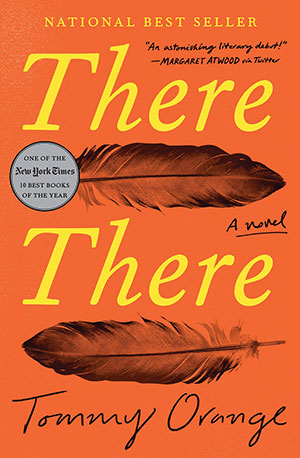 Urbanity
Urbanity
from the prologue of There, There
by Tommy Orange
Urban Indians were the generation born in the city. We’ve been moving for a long time, but the land moves with you like memory. An urban Indian belongs to the city, and cities belong to the Earth. Everything here is formed in relation to every other living and non-living thing from the Earth. All our relations. The process that brings anything to its current form, chemical, synthetic, technological or otherwise, doesn’t make the product not a product of the living Earth. Buildings, freeways, cars, are these not of the Earth? Were they shipped in from Mars, the moon? Is it because they’re processed, manufactured, or that we handle them? Are we so different? Were we at one time not something else entirely? Homo sapiens, single-celled organisms, space dust, unidentifiable pre-bang quantum theory? Cities form in the same way as galaxies. Urban Indians feel at home walking in the shadow of a downtown building. We came to know the downtown Oakland skyline better than we did any sacred mountain range, the redwoods in the Oakland hills better than any other deep wild forest. We know the sound of the freeway better than we do rivers, the howl of distant trains better than wolf howls, we know the smell of gas and freshly wet concrete and burned rubber better than we do the smell of cedar or sage or even fry bread—which isn’t traditional, like reservations aren’t traditional, but nothing is original, everything comes from something that came before, which was once nothing. Everything is new, and doomed. We ride buses, trains, and cars across, over, and under concrete plains. Being Indian has never been about returning to the land. The land is everywhere or nowhere.
Copyright © 2018 by Tommy Orange
Reprinted by permission of the publisher
